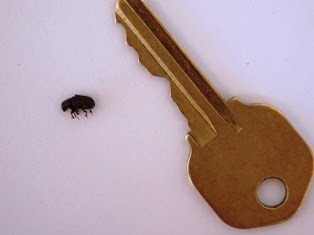 For about the past ten years, the forests of the western United States have been subject to two different bark beetle epidemics. Most recently, the talk has been of the Mountain Pine Beetle (MPB, Dendroctonus ponderosae), which, as you might guess, impacts mostly pine trees. There have been large areas—millions of acres—of pine mortality in places like Colorado and Montana. The dead trees are often lodgepole pine (Pinus contorta), which is not rare, but a high rate of mortality in outposts of five-needle pines, such as whitebark pine (Pinus albacaulis), have caused some to worry that rarer species may face local extirpations.
For about the past ten years, the forests of the western United States have been subject to two different bark beetle epidemics. Most recently, the talk has been of the Mountain Pine Beetle (MPB, Dendroctonus ponderosae), which, as you might guess, impacts mostly pine trees. There have been large areas—millions of acres—of pine mortality in places like Colorado and Montana. The dead trees are often lodgepole pine (Pinus contorta), which is not rare, but a high rate of mortality in outposts of five-needle pines, such as whitebark pine (Pinus albacaulis), have caused some to worry that rarer species may face local extirpations.
Meanwhile, in spruce-fir forests, there have been cases of nearly complete Engelmann spruce (Picea engelmannii) mortality—see Utah's Markagunt Plateau—caused by a cousin of the MPB called the spruce beetle (Dendroctonus rufipennis). The specimen pictured is a spruce beetle plucked last Thursday from beneath the bark of a dead spruce tree at the headwaters of Wolf Creek in northern Utah. The spruce beetle lives in the cambium of the tree for two years, eating the phloem until the tree is completely girdled. Unfortunately, what is often left in place of the spruce is subalpine fir (Abies lasiocarpa), which is the rattiest-looking excuse for a tree a forest visitor could ever wish to see.
Are they cutting any of that beetle killed timber in CO? I've heard there are no mills left in CO. Any of that true?
ReplyDeleteThere might be one, I'm not sure. We wrote some silvicultural prescriptions last month for beetle infested Engelmann spruce on the Pike-San Isabel. The Timber Staff said that he would have to implement them using stewardship contracts.
ReplyDelete